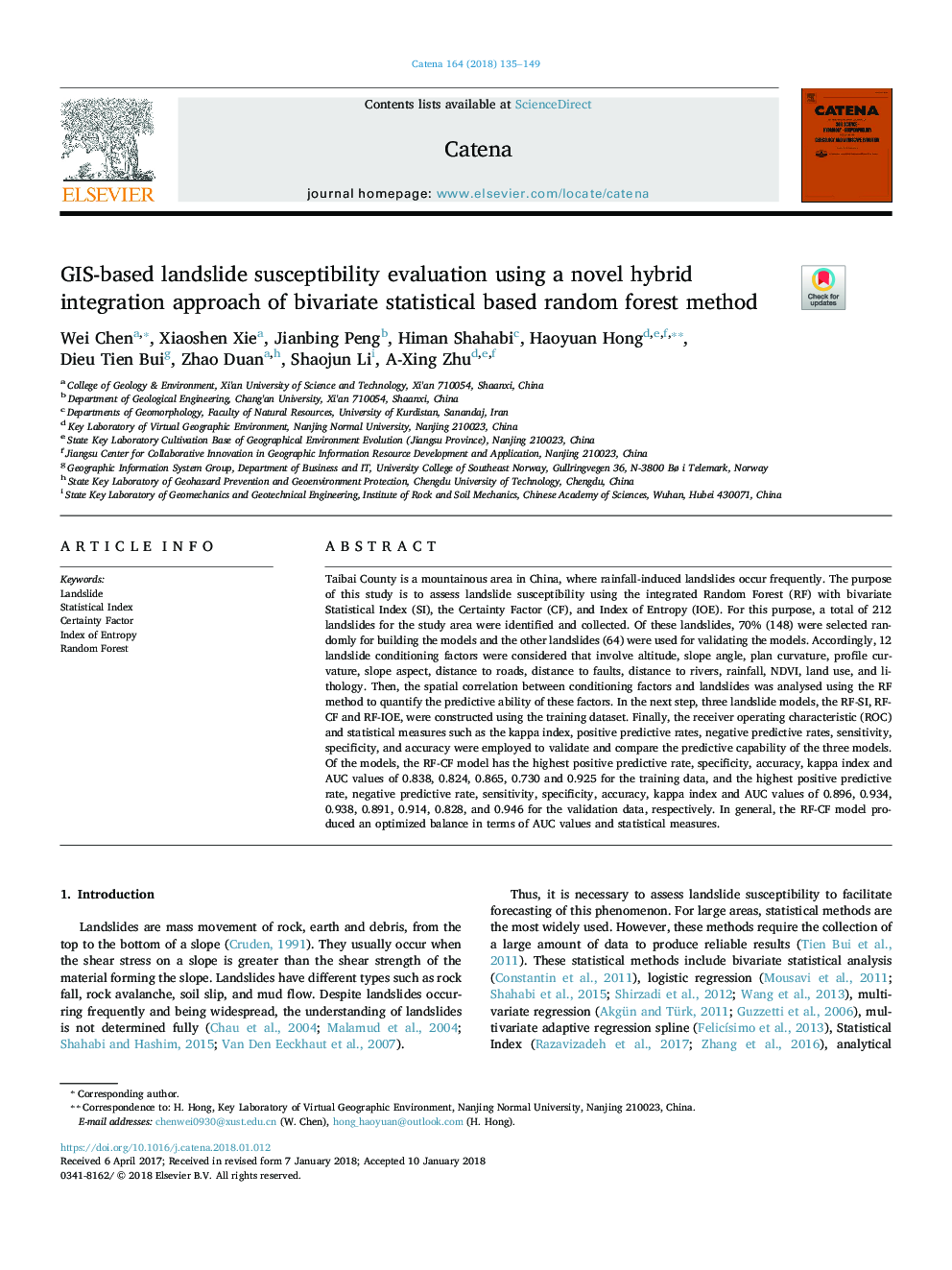| کد مقاله | کد نشریه | سال انتشار | مقاله انگلیسی | نسخه تمام متن |
|---|---|---|---|---|
| 8893667 | 1629190 | 2018 | 15 صفحه PDF | دانلود رایگان |
عنوان انگلیسی مقاله ISI
GIS-based landslide susceptibility evaluation using a novel hybrid integration approach of bivariate statistical based random forest method
دانلود مقاله + سفارش ترجمه
دانلود مقاله ISI انگلیسی
رایگان برای ایرانیان
کلمات کلیدی
موضوعات مرتبط
مهندسی و علوم پایه
علوم زمین و سیارات
فرآیندهای سطح زمین
پیش نمایش صفحه اول مقاله

چکیده انگلیسی
Taibai County is a mountainous area in China, where rainfall-induced landslides occur frequently. The purpose of this study is to assess landslide susceptibility using the integrated Random Forest (RF) with bivariate Statistical Index (SI), the Certainty Factor (CF), and Index of Entropy (IOE). For this purpose, a total of 212 landslides for the study area were identified and collected. Of these landslides, 70% (148) were selected randomly for building the models and the other landslides (64) were used for validating the models. Accordingly, 12 landslide conditioning factors were considered that involve altitude, slope angle, plan curvature, profile curvature, slope aspect, distance to roads, distance to faults, distance to rivers, rainfall, NDVI, land use, and lithology. Then, the spatial correlation between conditioning factors and landslides was analysed using the RF method to quantify the predictive ability of these factors. In the next step, three landslide models, the RF-SI, RF-CF and RF-IOE, were constructed using the training dataset. Finally, the receiver operating characteristic (ROC) and statistical measures such as the kappa index, positive predictive rates, negative predictive rates, sensitivity, specificity, and accuracy were employed to validate and compare the predictive capability of the three models. Of the models, the RF-CF model has the highest positive predictive rate, specificity, accuracy, kappa index and AUC values of 0.838, 0.824, 0.865, 0.730 and 0.925 for the training data, and the highest positive predictive rate, negative predictive rate, sensitivity, specificity, accuracy, kappa index and AUC values of 0.896, 0.934, 0.938, 0.891, 0.914, 0.828, and 0.946 for the validation data, respectively. In general, the RF-CF model produced an optimized balance in terms of AUC values and statistical measures.
ناشر
Database: Elsevier - ScienceDirect (ساینس دایرکت)
Journal: CATENA - Volume 164, May 2018, Pages 135-149
Journal: CATENA - Volume 164, May 2018, Pages 135-149
نویسندگان
Wei Chen, Xiaoshen Xie, Jianbing Peng, Himan Shahabi, Haoyuan Hong, Dieu Tien Bui, Zhao Duan, Shaojun Li, A-Xing Zhu,